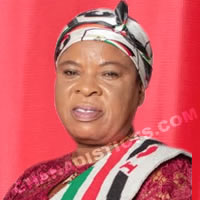

School Attendance
Data was collected on school attendance for all persons three (3) years and older. School attendance refers to whether a person has ever attended, was currently attending or has never attended school. In the census, school meant an educational institution where a person received at least four hours of formal education.
Although the lower age limit of formal education is six years for primary one, eligibility for the school attendance question was lowered to three years because pre-school education has become an important phenomenon in the country.
Level of Education
Level of education refers to the highest level of formal school that a person ever attended or was attending. This information was obtained for persons 3 years and older.
Activity Status
Activity status refers to economic or non-economic activity of respondents during the 7 days preceding census night. Information on type of activity was collected on persons 5 years and older. A person was regarded as economically active if he/she:
a. Worked for pay or profit or family gain for at least 1 hour within the 7 days preceding Census Night. This included persons who were in paid employment or self- employment or contributing family workers.
b. Did not work, but had jobs to return to.
c. Were unemployed.
The economically not active were persons who did not work and were not seeking for work. They were classified by reasons for not being economically active. Economically not active persons included homemakers, students, retired persons, the disabled and persons who were unable to work due to their age or ill-health.
Literacy and Education
Table 3.9 shows the literacy levels for persons 11 years and older by sex in the Kwahu Afram Plains North District. Out the total population of 66,359 who are 11 years and older in the district 59.5 percent are literate while 40.5 percent are not literate in any of the languages.
It can be deduced from the table that the proportion of males who are literate (63.4%) is higher than the proportion of females who literate (55.2%). Proportion of the literate population who are literate in English and Ghanaian language (60.6%) is higher than all the other literacy groups. Literacy in a Ghanaian language only generally is higher than in English language as shown in the table. 30
For both sexes literacy is still higher for a Ghanaian language than for English or French. Whiles 18.9 percent males are literate in a Ghanaian language the corresponding figure for English is 16.2 percent and for both languages it is 64.3 percent. The situation is similar for the females.
Table 3.10 shows that the population 3 years and older who have never attended school (38.9%) are more than those who are now attending (33.1%).
With respect to the sexes females who have never attended school (41.7%) are more than their male counterparts (36.4%).
Table 3.10: School attendance by sex
Level of Education by School Attendance
Table 3.11 presents the population three years and older by level of education, school attendance and sex. About 30,481 representing 30 percent of the total population in the district are currently in school. This is made up of Nursery (7.7%), Kindergarten (16.7%), Primary (55.6%) and JHS (14.2%), SSS/SHS (4.4%), secondary (0.0%) and tertiary is 0.6 percent.
The total population of those who attended school in the past constitutes 25,816 of which 33 percent attained primary level, JHS/JHS (27.7%), middle 24.3 percent, SSS/SHS 5.5percent, secondary 2 percent and tertiary 3.7 percent respectively. Only about 1.5 percent of the population is in higher education beyond the secondary level to tertiary.
This is far below the proportion of the population who attained higher education in the past 9.8 percent. Between the sexes, more males 14,274 (55.3%) attended school in the past than females 11,542 (44.7%). Beyond the secondary to tertiary level the educational gap between males and females are 19 percent and 10.7percent respectively.
Currently, the population of males 16,779 (55%) attending school at all levels of education are more than females 13,702 (45%). From the analysis it can be observed that the female’s education in the district decreases progressively as they climb high.
Date Created : 11/26/2017 12:56:14 AM













 facebook
facebook
 twitter
twitter
 Youtube
Youtube
 +233 593 831 280
+233 593 831 280 0800 430 430
0800 430 430 GPS: GE-231-4383
GPS: GE-231-4383 info@ghanadistricts.com
info@ghanadistricts.com Box GP1044, Accra, Ghana
Box GP1044, Accra, Ghana